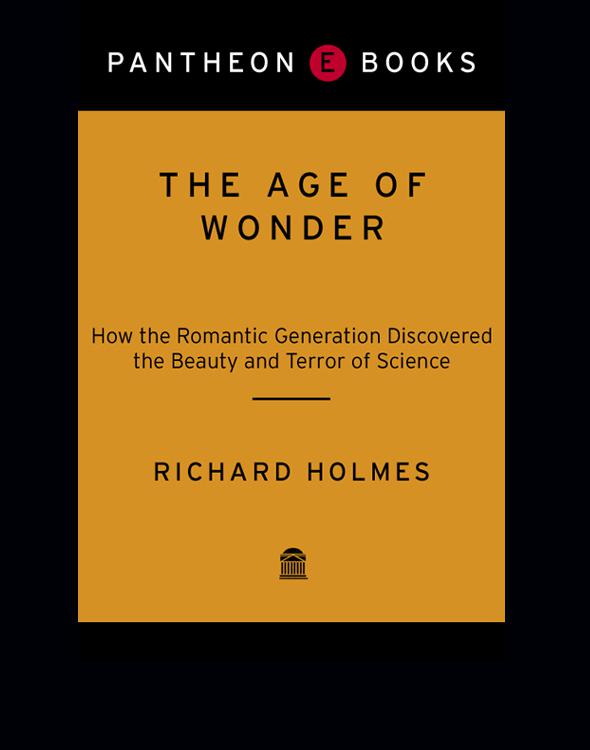
The Age of Wonder
How the Romantic Generation Discovered the Beauty and Terror of Science
کتاب های مرتبط
- اطلاعات
- نقد و بررسی
- دیدگاه کاربران
نقد و بررسی

Starred review from June 1, 2009
The Romantic imagination was inspired, not alienated, by scientific advances, argues this captivating history. Holmes, author of a much-admired biography of Coleridge, focuses on prominent British scientists of the late 18th and early 19th centuries, including the astronomer William Herschel and his accomplished assistant and sister, Caroline; Humphrey Davy, a leading chemist and amateur poet; and Joseph Banks, whose journal of a youthful voyage to Tahiti was a study in sexual libertinism. Holmes's biographical approach makes his obsessive protagonists (Davy's self-experimenting with laughing gas is an epic in itself) the prototypes of the Romantic genius absorbed in a Promethean quest for knowledge. Their discoveries, he argues, helped establish a new paradigm of “Romantic science” that saw the universe as vast, dynamic and full of marvels and celebrated mankind's power to not just describe but transform Nature. Holmes's treatment is sketchy on the actual science and heavy on the cultural impact, with wide-ranging discussions of the 1780s ballooning craze, Mary Shelley's Frankenstein
and scientific metaphors in Romantic poetry. It's an engrossing portrait of scientists as passionate adventurers, boldly laying claim to the intellectual leadership of society. Illus.

June 1, 2009
Energetic analysis of the"Romantic Age of Science."
Romanticism, the deeply emotional artistic movement of the second half of the 18th century, was partly a reaction against the pragmatism of Enlightenment scientists. However, British historian Holmes (Sidetracks: Explorations of a Romantic Biographer, 2000, etc.) writes, the divide between scientific endeavors and artistic pursuits was not always so clearly delineated. The author focuses primarily on the lives of two men who straddled both worlds, who embraced"Romantic science" and pursued it with the passion of poets or painters. Astronomer William Herschel, who discovered the planet Uranus in 1781, started his career as a musician. That led to an interest in mathematics and then astronomy, which he pursued with the same emotional fervor as any classical music piece. He even compared his skill at seeing astronomical phenomena with the skill required to play Handel's fugues. Holmes also looks at the British chemist Humphry Davy, who, among other accomplishments, discovered that chlorine and iodine were elements. Early on, Davy wrote poetry, and later became friends with Samuel Taylor Coleridge. One of his poems celebrated"science, whose delicious water flows / From Nature's bosom." Davy's enthusiasm led to risky, self-destructive behavior—he often inhaled strange chemical gases as experiments, a practice that nearly killed him. While partaking of nitrous oxide with acquaintances, he extolled the glories of science:"I dream of Science restoring to Nature what Luxury, what Civilization have stolen from her—pure hearts, the forms of angels, bosoms beautiful, and panting with Joy& Hope." Davy may have had a brilliant scientist's brain, but he had the heart and soul of a poet. How these two contradictory ideas not only coexisted, but flourished together during the Romantic era, makes for engrossing reading.
Enjoyable excavation of a time when science and art fed off each other, to the benefit of both communities.
(COPYRIGHT (2009) KIRKUS REVIEWS/NIELSEN BUSINESS MEDIA, INC. ALL RIGHTS RESERVED.)

Starred review from May 15, 2009
While Romanticism in Great Britain is known mostly as an artistic, literary, and intellectual movement, rapid and revolutionary scientific discoveries were an underlying catalyst to the era's vaunted sense of "wonder." It was also a period when remarkable individuals working alone could make major contributions to knowledge. Historian and biographer Holmes ("Dr. Johnson & Mr. Savage") conveys the history of Romantic-era science through vivid biographies of a few such individuals. Notable among them are Joseph Banks, a botanist whose experiences in Tahiti were life-changing; William Herschel, the eccentric astronomer who (aided invaluably by his devoted sister, Caroline) discovered the planet Uranus; and Humphrey Davy, an intrepid chemist who conducted gas inhalation experiments on himself. These and others are depicted against the cultural tapestry of an age of idealism, which was both fueled and threatened by the advances of science. The subject makes this book most relevant for readers of general science and history of science, but its engaging narratives of the period could appeal to a broader readership. [See Prepub Alert, "LJ" 3/1/09.]Gregg Sapp, Evergreen State Coll. Lib., Olympia, WA
Copyright 2009 Library Journal, LLC Used with permission.

July 1, 2009
As a researcher of British science during the Romantic period of English literature, Holmes suitably emphasizes the individual facing nature, so characteristic of the Romantic sensibility. Alighting on astronomer William Herschel (17381822) and chemist Humphrey Davy (17781829), both of whom were artistic (music and poetry, respectively), Holmes connects them via botanist Joseph Banks. In a precursor to a modern pattern, Banks moved from his youthful success as a naturalist on James Cooks voyages into administrationpresident of the Royal Societyand promoted bothHerschel and Davy.They came to Banks notice seemingly from nowhere, and their determination to discover is well told in Holmes biographical narratives. Elevated to societal notice, Herschel and especially Davy excited popular interest in ultimate questions their scientific findings seemed to open up, questions whose ripples into the literature of Byron and Mary and Percy Shelley Holmes elaborates. Readers interested in any of these figures, or in the lives of astronomer Caroline Herschelandexplorer Mungo Park, have in Holmes a fine guide to the arts and sciences, Romantic style.(Reprinted with permission of Booklist, copyright 2009, American Library Association.)

























دیدگاه کاربران